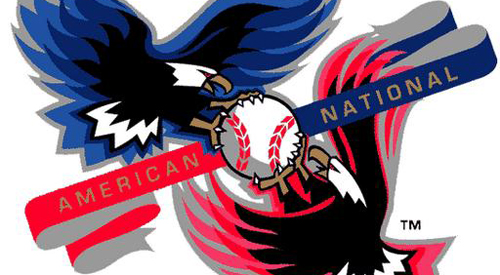
MLB interleague play: The guest that won’t leave
For many baseball fans, it was a dream turned into a reality.
Interleague play. A chance to witness the battles of New York City, Chicago, Canada, Ohio, Missouri, Texas and California, just to name a few. Meaningful matches between geographical rivals who, until 1997, had to rely on exhibition games or an improbable chance meeting in the World Series to invigorate their rivalries.
But after 14 years and hundreds of regular season games between American League and National League teams, does interleague play still have the same prominence?
If you ask Major League Baseball, the answer would be a resounding yes.
A recent MLB press release stated 8,468,620 fans attended interleague contests this season. That’s an average of 33,606 per game; 18.2 percent higher than the average for intraleague games (28,421 per game). In addition, the press release noted that interleague games have drawn 12% more fans than intraleague games since its inception.
The attendance numbers are phenomenal, considering that not every interleague matchup has the same appeal.
[php snippet=1]
“There are going to be series that generate little interest,” says David Pinto, former chief researcher for ESPN’s Baseball Tonight and owner of BaseballMusings.com. “But that’s going to happen any time you pit poor teams against each other.”
So while a series involving the Florida Marlins and Seattle Mariners might not generate the same excitement as a three-game set between the Boston Red Sox and Philadelphia Phillies, fans appear more inclined to watch teams they don’t normally see.
Unsurprisingly, baseball purists are not fans of the format.
Ray McNulty of Scripps Treasure Coast Newspapers would certainly fit under the purist category. In a July 6 editorial on TCPalm.com, the Florida-based columnist described interleague play as “blatantly unfair.”
“It’s unfair for AL teams, which often build their lineups around high-priced DHs, to be compelled to choose between playing without one of their best hitters and putting themselves at a defensive disadvantage when they go to NL parks,” wrote McNulty.
“Likewise, it’s unfair for NL teams, because they don’t build their lineups around DHs and, thus, are left to fill that spot with bench players when they go to AL parks.”
As for the players and coaches, there hasn’t been any strong opposition or approval; at least not publically. One player that does enjoy interleague games, though, is Minnesota Twins right fielder Michael Cuddyer.
In a recent blog post on FoxSportsNorth.com, the 11-year veteran praised interleague play as a strong learning experience.
“[The Twins] didn’t finish with a winning record during interleague play, but we did face some good competition in games we can learn from and build on,” wrote Cuddyer. “Just as fans like interleague games, seeing and playing a different brand of baseball against some unfamiliar players is good for us. It can bring an added element to an already great game.”
Interleague play is not a perfect process. The scheduling, for example, is a mess. Some teams play home-and-home series; some don’t. It’s one aspect that could certainly change.
“I would change out the home-and-home series,” says Pinto. “Rather than the Mets and Yankees playing six games, I’d rather each team play some other team or just drop that series entirely.”
Another issue involves the All-Star game and the World Series.
The allure of these events is the notion of the best of one side playing the best of the other side. They were, initially, the only moments during the baseball season when the AL and NL battled to determine who the stronger league was.
But with interleague play, where AL and NL teams play 18 regular season games against each other, one must wonder if the appeal of the All-Star Game and World Series is diminished.
According to Pinto, both events have suffered for different reasons, but notably the All-Star game because of interleague play during the regular season.
“I think it has diminished the All-Star game somewhat,” says Pinto. “The whole point of the All-Star game was to get to see players from the different leagues go head to head. More movement between the two leagues over the years was already having that [negative] effect anyway.”
As long as there is interest and it’s translated to high attendance marks, do not expect MLB to scrap interleague play anytime soon. It comes down to money and, based on the numbers given by MLB, a three-game series between teams from opposing leagues have cash registers working overtime.
Like it or not, interleague play is not going anywhere.
[php snippet=1]

